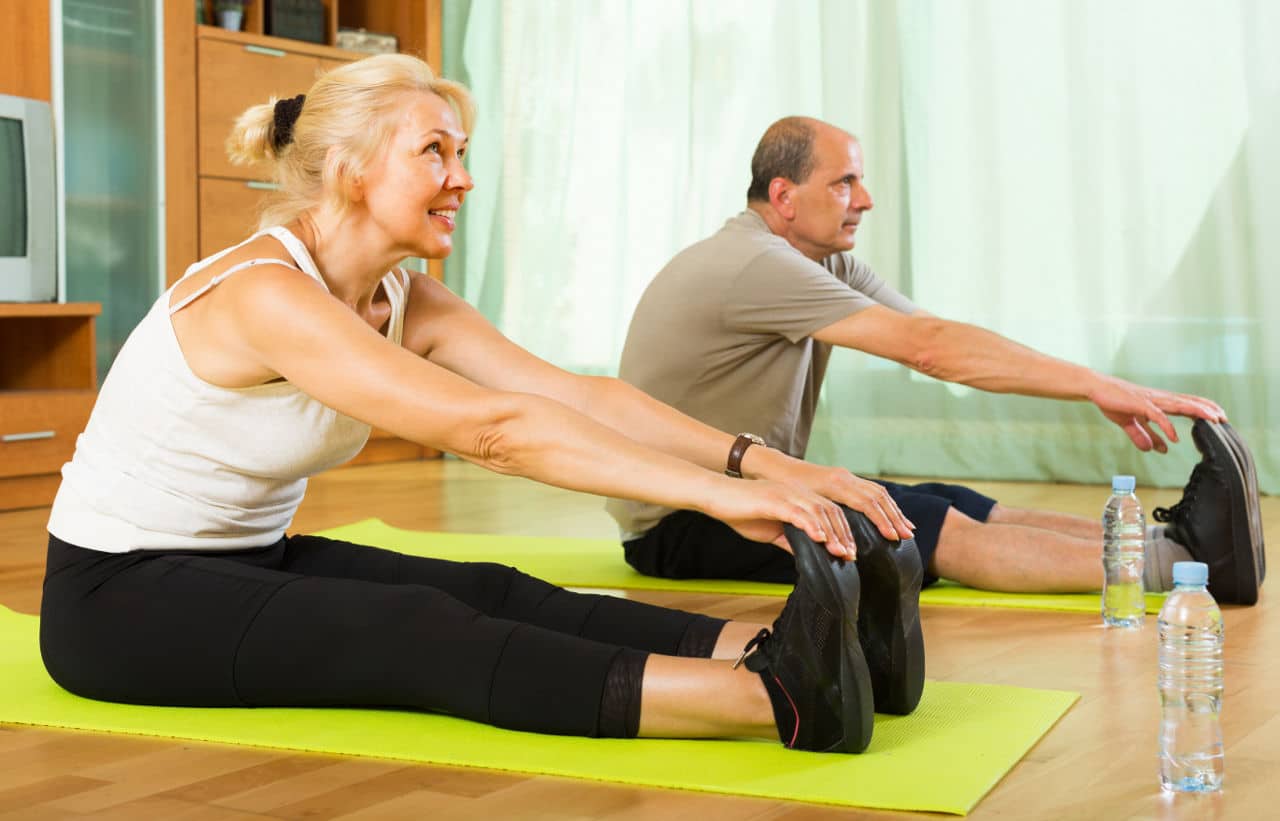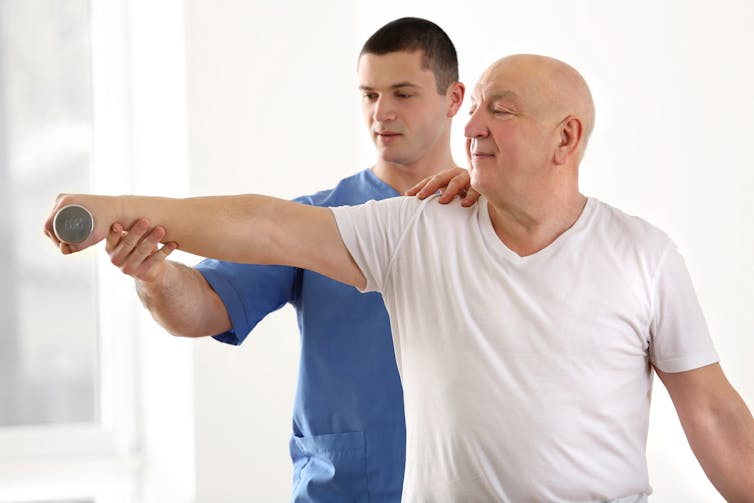Sport doesn't cure cancer, but it can help.
Today, everything is said and written about the benefits of sport against cancer - all too often without sufficient scientific argument. However, an analysis of the available studies can help patients know what to expect from their investment. While sport is no cure for cancer, certain physical activity programs can help - and the evidence backs them up.
Gregory Ninot, University of Montpellier
Sport becomes an asset in the fight against cancer. Associations offer patients the chance to practice karate or tai chi. Specialized cancer centers such as the Institut Curie organize group gymnastics and endurance classes. Some companies set up exercise sessions via videoconferencing, such as V@si. And some sports federations, such as tennis, offer specific sessions for this audience.
Following an adapted physical activity program is one of the many "alternative medicines" that can be used in this disease, as a complement to treatment. Its benefits will be discussed at the scientific congress oneffectiveness of non-drug interventions in cancerheld on March 23 in Montpellier, on the initiative of the CEPS platform.
Physical activity, long considered a sideline
A little history. Prior to the 1980s, there was no interest in physical activity among cancer professionals in France. Priority was given to treatment: surgery, radiotherapy and chemotherapy - the rest was secondary. And rightly so, given the progress that had been made in the field.
Specialized hospitals, the Centres de Lutte Contre le Cancer (CLCC), were set up in major cities to cope with the growing flow of patients, who were being screened at an increasingly early stage, and to install technical platforms in appropriate premises.
Between 1980 and 2000, teams launched the first clinical trials, notably in Canada and the United States. A prospective trial published in 1999 by an American scientist, for example, showed an improvement in the quality of life of 27 patients treated with chemotherapy for breast cancer, thanks to an eight-week physical activity program carried out at home.
Initial studies in breast cancer in particular
Most of the studies available during this period were pilot studies, with numerous methodological limitations. There was a predominance of breast cancer - the temptation being great, then, to extrapolate the results to all cancers. The physical activities analyzed were very different from one another. And they were initiated at different times in the patient's care: just after diagnosis, before the start of treatment, after treatment.
However, a review of the scientific literature published in 1999 confirmed the significant impact of physical exercise on patients' health-related quality of life. At the time, the aim of physical activity was not only to improve quality of life, but also to boost self-esteem, which had been undermined by aggressive treatments that led to hair loss in particular.
Enjoying sport was essential. The choice of sport was left to the patient, with the idea of regaining self-confidence and breaking with isolation. This practice was mainly carried out at home, encouraged by healthcare professionals and a few pioneering oncologists. The health messages were fairly basic. Described as hygienic and dietetic, they could be summed up today by the phrase: "you need to move more with cancer".
Reduce fatigue, pain and anxiety
In the 2000s, physical activity became a fully-fledged form of "supportive care". In other words, it forms part of "the care and support required by patients throughout their illness". Official recommendations state that physical activity should be started as soon as possible after the patient has been diagnosed with cancer.

Shutterstock
The ambition is threefold. Firstly, to reduce symptoms induced by treatments and the cancer itself, such as fatigue, pain, anxiety, depression, nausea, sleep disorders, lymphedema (swelling linked to poor lymph circulation) and neuropathy (nerve disorders). Secondly, to improve general health, physical condition and body composition - in other words, to promote muscle mass gain at the expense of fat mass, particularly abdominal fat. Finally, to prevent physical deconditioning, i.e. the vicious circle leading to physical inactivity, with all its physiological (e.g. muscle atrophy) and psychological (e.g. loss of confidence in one's physical abilities) repercussions. This deconditioning is a factor in poor prognosis, less effective treatment and higher mortality.
Randomized controlled trials were then carried out, with converging conclusions showing reduced fatigue and anxiety-depressive symptoms, improved physical condition and prevention of deconditioning. A succession of meta-analyses provided the highest level of evidence, in 2005, 2006, 2009 and 2011.
Adjusting the intensity of practice to avoid exhausting the patient
A latest meta-analysis, published in 2012, is particularly demonstrative, concluding that a supervised physical activity program is beneficial for fatigue, on the basis of 56 randomized controlled trials involving 4068 patients treated for cancer. The practice is supervised to ensure the safety of participants - taking into account, for example, the risk of cardiovascular problems due to chemotherapy. Supervision ranges from dosing the intensity so as not to exhaust patients during their treatment, to maintaining their participation over time.
Further work is currently being carried out in the post-cancer period, to encourage people to pursue regular weekly physical activity in line with recommendations. General principles established by theInstitut général du cancer (INCa) in 2017 provide a framework for these practices. Two other institutions, Inserm and Haute autorité de santé (HAS), will publish their recommendations this year.
These initiatives are part of a general "sport on prescription" movement, applicable by decree since March1, 2017. This involves the medical prescription of adapted physical activity (APA) programs for chronically ill people. Added to this is the incentive to practice APA mentioned in the 2014-2019 Cancer Plan.
Distinguishing false promises from true ones
In France, there is a plethora of unevenly distributed physical activity offerings from CLCCs, clinics, medical centers, sports associations, cancer associations, health sports companies, start-ups and self-employed professionals. This profusion of proposals is sometimes accompanied by promises that go beyond scientific knowledge, even going so far as to promise a cure or the prevention of recurrence.
To date, it is impossible to predict such results on an individual scale. Only cohort studies, which follow hundreds of patients over time, give any indication of the role of physical activity in recovery. And then only in terms of probability. For example, analysis of 24 cohorts from different countries, comprising a total of 35,622 patients, indicates a 38% reduction in the risk of cancer mortality in breast, colorectal and prostate cancer, according to the work of a Canadian team published in 2016. This does not make sport an anti-cancer remedy.
Clinical trials are beginning to be carried out around the world on survival and recurrence reduction thanks to physical activity, in association with conventional cancer treatments, such as that carried out by a team from the University of Alberta (Canada) in colon cancer , whose protocol was published in 2008. Initial results will be available by 2020. In the meantime, there is still insufficient evidence to confirm that physical activity at a given intensity and in a given way can influence cancer progression or recurrence.
Acting on immunity, metabolism, inflammation and neuropsychology
The basic idea is to slow tumor progression and help prevent recurrence by providing targeted physical activity to stimulate immune, metabolic, inflammatory and neuropsychological functions. Scientific and clinical progress is still needed to understand the mechanisms involved and propose the best program for each patient, depending on his or her tumour and lifestyle.
![]() Hopes that physical activity might one day have an effect on tumors are not entirely unfounded. But for the time being, what has been proven is that physical activity sufficiently regular and well-dosed allows us to improve the patient's quality of life, enhance his or her general state of health, reduce the side effects of treatments and reinforce the effects of some. This is already a great deal.
Hopes that physical activity might one day have an effect on tumors are not entirely unfounded. But for the time being, what has been proven is that physical activity sufficiently regular and well-dosed allows us to improve the patient's quality of life, enhance his or her general state of health, reduce the side effects of treatments and reinforce the effects of some. This is already a great deal.
Gregory NinotProfessor of Health, Psychology and Sports Science, University of Montpellier
Visit original version of this article was published on The Conversation.